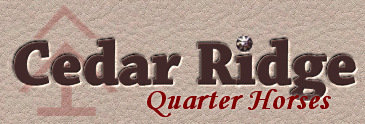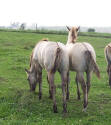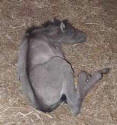

Dun Factor Markings
|
There is often a great difficulty determining a horse's color when it comes to dilution genes, especially as foals. Because of countershading, sooting, and other color modifications, foals are often mislabeled as duns or grullas when they really should be registered as buckskins or blacks. See the bottom of www.grullablue.com/grullocolor.htm for photo examples of foal coat colors that can easily be mistaken for dun/grullo colors.
But as horses shed their foals coats, it should become more readily apparent if they carry the dun factor trait or not. Photos below show some of the dun factor traits to look for. Not all dun-factored horses will have all traits, but in my experience, all of them have had the CLEAN and CRISP dorsal stripe and the ear tips.
Why is it important? Why should anyone care? Because if a horse is being sold and is misrepresented (purposefully or accidentally) as being one color and it truly isn't that color, then it reflects badly on the seller when the truth is found out. It can also be very disappointing to the buyer. I have heard of too many instances of this...both purposeful and accidental, that have both hurt seller reputations and damaged buyer's pocketbooks. The largest case occurs when a buyer pays a higher price for a rare color, such as grullo, only to have the horse shipped home to see for the first time in real life and find that it is a buckskin, black, smoky black, or gray.
Countershading (NON-dun factor striping)
The following table contains photos of horses that are NOT dun-factored horses. "Countershading" is a form of striping that is probably a remnant of primitive camouflage, but which is not the same as dun striping. It is not a dilution, and may only be visible on young horses. Some horses will retain some countershading for their whole lives, but it is far less distinct and contrasting with surrounding colors when compared to dun factor striping.
|
|
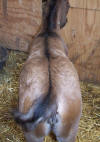 Not Dun Factor A black foal with countershading-caused dorsal and shoulder barring. Click here for proof that this filly is not dun factored. |
|
|
|



Not Dun Factor DNA tested buckskin with NO dun factor gene. |
|
|
|
|
|
|


 Not Dun Factor Super pictures of buckskin foals with countershading stripes that are not caused by dun factor. Notice that the dorsal on these foals stops abruptly at the top of the tail. The foals also do not have ear tips. |
|
|
|

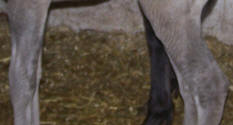 Neither dun factor nor countershading. These are not stripes. This is a hair pattern that shows up best on black and blue roan foals' back legs, and that many people mistake for leg bars. It is not, and is probably a trick of lights on waved/curly hair. |
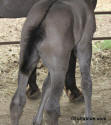
 Not Dun Factor Countershading stripes on black and smokey black foals' legs are fairly common, but disappear over the first year. |
|
|
|
|
Interesting picture, below. It shows how hard it is to guess horse colors when you can't see "the whole picture" through multiple photos, seeing the horse in person, and/or knowing the sire/dam genetics. Without looking anywhere else but at this photo, what colors do you think these two yearlings (below) are? Click the photo above to enlarge it. Then click HERE to see if you got it right! |
 Click the photo to view it full sized. 3 dun factors, one countershading (non-dun). Can you tell which is NOT a dun factor dorsal stripe?
Click here for the answer.
|
What color is YOUR horse?
If you are trying to determine the color of your foal or horse, keep this in mind:
The most common mistake people make
is in
trying to force others to believe
that their foal or horse is the color
they WANT him to be.
Many, many people have asked me over the past few years what color their foals were, and then have refused to accept my opinion because they so badly wanted their foal to be a different color. As you try to figure out your foal's color, leave your personal preference out of it....go by the facts first. Hopefully, you'll be pleased in the end! But if not (for example, if you wanted him to be a grulla and he turns out to be a sooty buckskin), take comfort in the fact that you know the truth and can educate others about the differences between similar colors.
Click here to Request help determining your horse or foal's color
-
What color will the foal be? The dun link covers the foal coat colors and colors at maturity of the dun gene (red dun, dun, and grulla). http://members.aol.com/battyatty/dunfoal.htm
-
Variations of buckskins The creme link covers buckskins. http://members.aol.com/battyatty/sooty.htm It has a couple of pictures of sooty buckskins that are mistaken for grullas, but are not grullas. Remember, buckskins are NOT the same as duns.
-
Grulla coloring Examples of Grullos and Introductory Color Discussion
-
Is he a buckskin or a dun? This link tells you the difference between a buckskin and a dun/grulla/red dun. http://members.aol.com/battyatty/buckdun.htm
-
Does your horse have a dorsal stripe, but neither of his parents did? IMPORTANT LINK. This one talks about markings that are similar to dun dorsal stripes, but not the same. These markings are responsible for a lot of horses being called dun or grulla who really are not. http://members.aol.com/battyatty/count.htm Also visit http://tenderquarterhorses.tripod.com/tqh_020.htm to learn about sootiness/smuttiness and countershading.
-
Dilution genes...dun, creme, champagne. http://www.ultimatehorsesite.com/horsecolor/dilutes.html This site has photos and descriptions of different dilute colors. Some of her photos border on mislabeled "in my opinion," (mainly the grullo shades), but her descriptions/definitions appear to be pretty well founded.
-
More about dun factor genetics! http://www.thelinebackmorganstud.com/
-
The Champagne gene...not creme This link tells about the champagne gene, which causes buckskin-like colors. http://members.aol.com/battyatty/champagne.htm
Please visit our web site at www.grullablue.com or Sharon Batteatte's site at http://members.aol.com/battyatty/dunfoal.htm or e-mail me at tonip@frontiernet.net for more information or more contacts.
|
REFERENCES: This information was pulled out of my own brain in 2003, but my brain gained its information over the course of many years from internet sites, discussions with color genetics gurus, and from Equine Color Genetics, by Dr. P. Sponenberg, Ph D. Special thanks to Linda Coehoorn, Kris Enloe, IBHA, and Sharon Batteatte for helping me understand the genetics of the dun and grullo colors in the mid 1990's.
How To Donate Your Educational Photo:
-
If you are wondering what color your foal is, click here. We are having a lot of people send us pictures for this page where it is obvious that the foal owners don't know what color their foal is. Please, only send us photos for this page if you know your foal's color. If you don't know what color your foal is, click here.
-
If you foal is a Paint or Appaloosa, we will only use it if the vast majority of the foal's body is not included in the white patterned areas, as this page is intended to help people determine foal colors, so the colored hairs must be very obvious.
-
This is an educational page, and photos should show a safe environment and healthy horses. I don't even know how to respond when I receive photos of wormy, skinny horses in pastures littered with abandoned cars, farm equipment, wire fences laying on the ground, and falling-down buildings. I simply can't put photos like that on an educational page like this, where people come to learn.
-
Please note that this is not intended to be a free opportunity for you to advertise your breeding operation, and instead is an educational page. We will not use photos with watermarks/writing on them. There are many free advertising sites on the Internet at which you can advertise your farm/ranch/horses. Also, only send photos of foals you own. This way, there won't be copyright problems.

Feel free to click the "Send Your Photo" logo
at the left to send a good photo or two to us for inclusion on our
color pages.
Photo Ownership Notice:
All of the photos on this page are the property of Cedar Ridge QH's or were
sent to us with permission.
If someone has sent a photo to us for use on our pages that belongs to you,
and if they did not have
permission to do so,
please let us know.
If you are interested in contributing a photo, we thank you! But please do not
alter the photo or place your contact
information on it. Our educational pages are for just that...education. Not
advertisements. Thanks!
This page last updated
05/28/21
If you notice this date being 2 years or older, please let
us know that we need to check out this page!
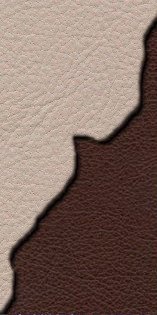
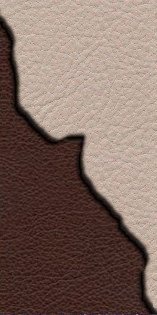
Home Horses For Sale Stallions Mares Foals Blog Color Genetics Riding Horses Site Map Contact Us

Toni Perdew
Bedford, Iowa
toni@grullablue.com
712-370-0851 cell, before 9 p.m. CST
![]()
www.facebook.com/CedarRidgeQuarterHorses
Web design by
CR
Equine Sites.
All rights reserved. Graphics are watermarked for copyright protection.
Terms of Use
